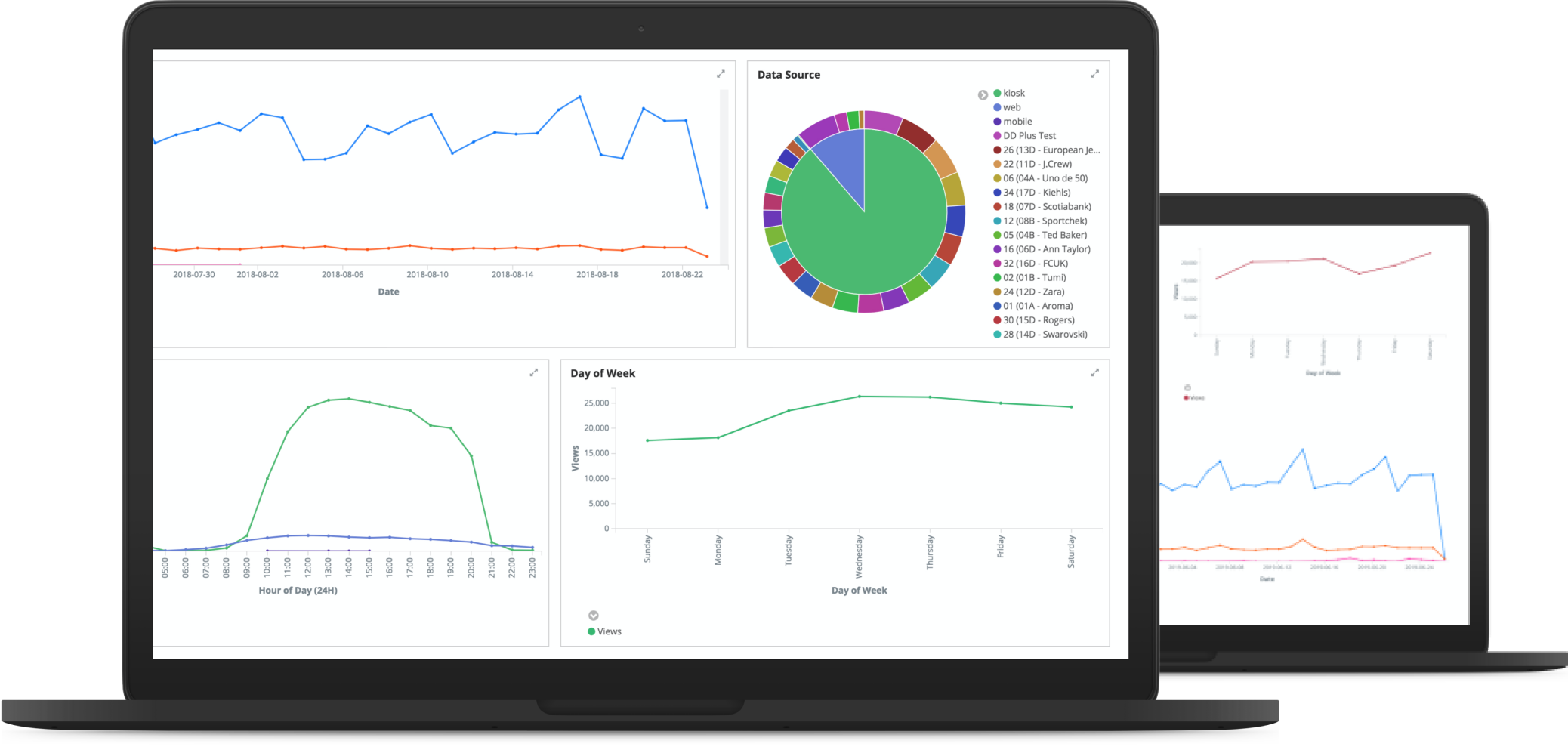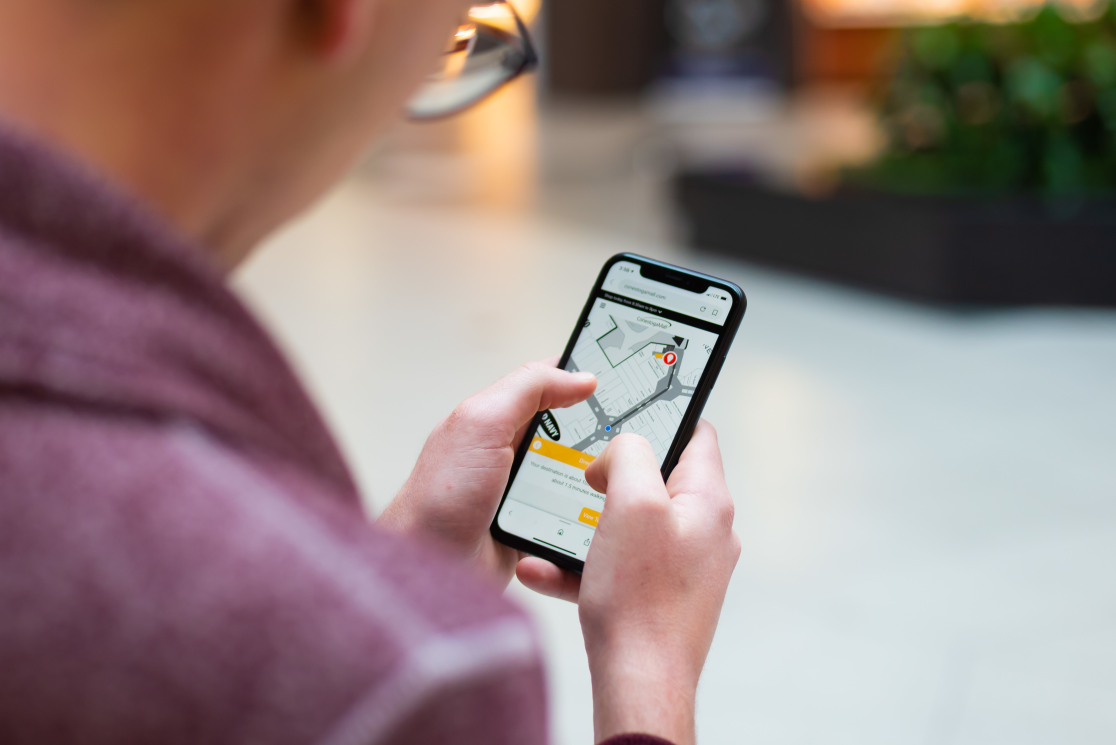Return to Resources
Location-Based Marketing: What is It? And Why Do You Need It?
May 5, 2022
8 min read
Location-Based Marketing: What is It? And Why Do You Need It?
Your guide to location-based marketing. What is it, how does it work, getting started with this strategy, and how Mappedin can help.
What is Location-Based Marketing?
Location-based marketing is a tactic that utilizes a person’s physical location to target them with personalized messages. Using location data, marketing teams are able to reach consumers based on qualifiers such as proximity to a store, events happening within their area, and more.

How Does Location-Based Marketing Work?
In order to target a user based on their current location, businesses can tap into GPS for outdoor environments and indoor positioning for buildings. There are a variety of technologies that can be used, including beacons, wi-fi, RFID, and geomagnetic, to understand this real-time position as people navigate the indoors.
There are two key requirements in order to have a functional location-based marketing strategy. The first is an understanding of a user’s current location through positioning layered with a digital venue map, and the second is that users must opt-in to receive notifications before businesses can send promotional alerts and messages.
Why Should You Use Location-Based Marketing?
Location-based marketing, also referred to as proximity marketing, is effective across customer lifecycles, from discovery and purchase, to engagement and retention, making it a powerful strategy for marketing teams. Whether your campaign goal is brand awareness or to drive purchases, location-based marketing allows businesses to capitalize on the current buying stage of their target audiences.

Advantages of Location-Based Marketing
Along with its unique targeting ability and the opportunity for impact throughout the buyer journey, location-based targeting has several other advantages to marketers. From location-based segmentation and attribution, to capitalizing on impulses with relevant content, it is worth exploring how this marketing strategy can improve the customer experience as well as customer loyalty.
Location-Based Segmentation
With location-based marketing, marketers have the ability to segment potential customers and send highly relevant and personalized offers and messages to those nearby.
In a survey done by Statista, 89% of marketers say the top advantage of using location-based marketing is sales. Moreover, Businesswire’s report shows location-based advertising campaigns are twenty times more successful than those that are not location-specific.
Convert Temptations into Sales
Successful location-based marketing campaigns will capture customers when they are receptive and can transform impulses into sales. In a shopping mall, for example, retailers can use proximity marketing to notify nearby shoppers about in-store events or promotional deals. Another strategy that retailers can deploy is to target shoppers who are browsing a competitor’s store. A shoe store, for instance, could send an alert to those who enter the shoe store down the hall that lets them know they are running a 20% off campaign.

Location-Based Attribution
Location-based attribution helps marketers understand the effect of their strategies and the real-world impact they have on sales. Because consumers rarely move without their mobile devices, higher levels of attribution precision and overall location intelligence are possible. By better understanding the customer journey with a digital map, businesses are able to connect the online and offline behaviours to understand purchase patterns, customer journey mapping, and of course attribution measurement.
Location-Based Marketing: What Works and What Doesn't
Location-based marketing is a great fit for any and all retailers, grocery stores, restaurants and any other physical location that people visit. While location-based marketing is a great fit for most, there are exceptions. Businesses that sell extremely common household products such as toothpaste or milk, for example, are not a great fit for proximity marketing. Industries that collect and process sensitive data are also likely to encounter challenges with this marketing tactic. Hospitals and healthcare facilities, for example, must follow strict regulations and codes of conduct.
Location-Based Marketing: Where it Works
Any business with a physical location is the best fit for location-based marketing because of its ability to geofence and geotarget certain areas. Some of these industries include:
Airports
Retailers
Stadiums
Grocery stores
Shopping malls
College and university campuses

Types of Location-Based Marketing
The three main components of location-based marketing are geofencing, geotargeting and geo-conquesting.
Geofencing
Geofencing refers to drawing an area around a location, or locations, where an audience visits in order to serve them real-time ads and content. One way to determine this area is to draw a radius around a point of interest, the assumption being that when mobile device users enter this circle, they are visiting the nearest location. A more accurate approach is to use polygons, which include irregular shapes, and allow businesses to draw precise, virtual perimeters around the physical structure of the point of interest.
Geotargeting
Once the geofence has been established, geotargeting is the process of creating audiences based on their current or historical visits to real-world locations. Using these audiences, marketers can deliver ads and content that are relevant to this geographic data. Those who frequent bookstores, for example, might be placed into an audience for a reading campaign.
Geo-Conquesting
The shoe store example above is a display of geo-conquesting. The goal of this tactic is to convert a competitor’s customers into your own.
Geo-conquesting is when marketers create audiences from visitors of competitive locations with the purpose of converting those customers into their own.
Trends in Location-Based Marketing
As more and more companies invest in proximity marketing, several trends have emerged.
Hyperlocal Content
Businesses are investing more time breaking down and understanding their target audiences and potential customers in order to provide hyper localized and relevant content.
Mobile App Content
Over the past several years, companies have begun localizing their mobile app content in an effort to further personalize the experience. Not only does this tactic provide a positive user experience, but businesses are able to collect valuable data on mobile app users to further segment them.
Smart Building Integrations
Smart buildings are physical environments that allow people to interact with interconnected networks and technologies. As businesses and individuals alike continue to adopt smart devices, there will be more ways to incorporate location-based messages and alerts.

How to Choose the Best Location-Based Marketing System
There are a variety of software companies that offer or facilitate proximity messaging and choosing the right one for your business is no easy task. Here are some things to consider when evaluating providers:
Experience
Scalability
Cost
Support
Features
Mobility
Reporting
APIs and data syncs
Getting Started with Location-Based Marketing
As marketing teams prepare to test proximity marketing tactics, they can easily begin with simple geotargeting tools provided by tech giants such as Google and Facebook. These solutions make the process fairly simple and will deliver ads in real-time to audiences visiting certain locations or geographic areas. As business needs grow and become more sophisticated, marketing teams should consider software tools that allow for more customization when creating geotargeted audiences, the ability to create audiences from historical visitation, such as visitors to their own locations or competitors’ locations, and more options for delivering those campaigns across the digital ecosystem.
Where Does Mappedin Come In?
The Mappedin platform enables venues to build editable, digitized maps for any use case. Remember earlier when we talked about geofencing? In order to draw the radius or polygon around your target area, you will require a visualization of your venue – whether a shopping mall, stadium, airport, or campus. Heat mapping is one result of combining a digital map with precise location data and through this visual, businesses can better understand foot traffic, how people move through a particular space, as well as where and how to target them.
The most fundamental element of location-based marketing is location data. Without this, businesses can not accurately target their potential customers. A digital map allows you to visualize where people are in relation to your target area. The map is a foundational layer to enable heightened visual and location-based experiences.

For a successful proximity marketing campaign, there are three key implementations: the advertising content, positioning, and the digital map. Mappedin’s blue dot navigation feature takes care of the second piece for marketers hoping to target customers indoors.
Let’s use an example. Shoppers can use Mappedin’s mapping solutions for malls to search the mall for retailers and services and populate accurate turn-by-turn directions to the destination of their choosing, directly from their mobile device. With blue dot enabled, shoppers can see their precise real-time location as they navigate. Not only is this an improved user experience for shoppers, but businesses can use this location data to serve relevant content to shoppers in the mall. A seamless experience may even have the notification appear within the digital map so that shoppers hoping to take advantage of the offer can simply click the alert and generate easy-to-follow directions.
To learn more about how Mappedin can enable powerful location-based experiences, contact us.


